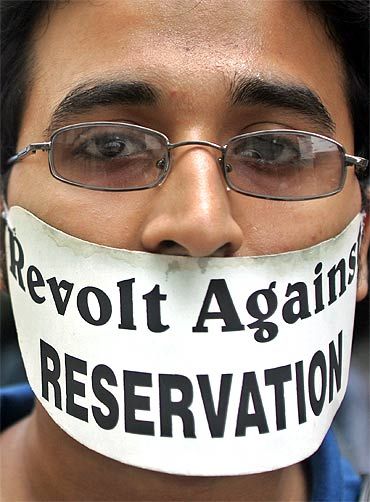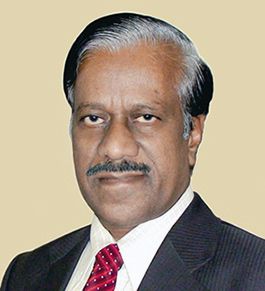Dr M Ponnavaikko, vice chancellor, Bharathidasan University writes about why he's dissatisfied with the current process of recruitment of teachers and suggests improvements in the education system in the country.
 The current structure for providing equity in the admission of students is not up to my expectation.
The current structure for providing equity in the admission of students is not up to my expectation.
The government institutions follow community and minority reservations.
To give equal opportunity in terms of equity, the reservation policy should be based on economic status and rural/ urban classification.
My proposals are as follows:
Income-based reservation
Instead of community-based reservation, income-based reservation shall be adopted, like people in below poverty line, people with average income and people in the high-income group.
In addition, certain percentage should also be allotted for rural students.
The private and self-financing institutions are not following any reservation policy.
Some amount of subsidy in the salary component of the teachers in the private and self-financing institutions should be considered and then these institutions shall be compelled to follow the government reservation policy to receive government subsidy.
The present situation in providing access to aspiring students for higher education is highly inadequate.
The government institutions do not have adequate capacity to accommodate more students.
As of date only about 13 per cent to 15 per cent of the class 12 pass out students in India are able to go for higher education for want of adequate seats in the government institutions, the rest are being left as dropouts.
The main reasons for this situation in India are:
- Required capacity for admitting all the aspiring students for higher education in the existing number of higher education institutes in the country is not available.
- The tuition fees in the private and self financing institutions are too high for the poor and middle class students. The rural-based poor students are not in a position to pay for hostel accommodation, if admitted in the city-based institutions and in institutions far away from their native village.
More accessibility to professional colleges
The government should establish a large number of academic institutions of all disciplines of learning in almost every taluka in the country, to have at least one engineering college and one Arts & Science College in every taluka and a medical college in every district.

Recruitment of better quality of teachers
The present minimum qualification prescribed by UGC does not ensure selection of teachers with required traits to be good teachers.
Through this process a person who cannot speak can be selected as a teacher.
Encourage Private-Public Patnernships
It is not financially feasible for the government to build such a large number of institutions.
It is possible only through Private–Public–Participation (PPP).
New policies should be evolved to motivate private investors to participate in providing higher education.
Now, politicians and commercial vendors have entered in the higher education domain with the motive of only making money, making education a business in the process.
Merit and need-based scholarships
The government should provide adequate scholarships on merit-cum-means basis for all the deserving students.
Excellence in education means that the academic institutions should have resources required to achieve the above goals.
It includes outstanding faculty, high quality teaching and other instructional activities and availability of good libraries, laboratories, and other pertinent facilities as well as highly prepared and motivated students who serve to educate through their peer influence.
Ultimately, the outputs of the academic institutions should be able to serve the industrial and institutional needs.
The author is an award winning educationist and holds a PhD degree in Optimal Distribution System Planning from the IIT-Delhi.
Among the countries he's visited include the US, UK, Canada, France, Singapore, Germany and South Africa.










